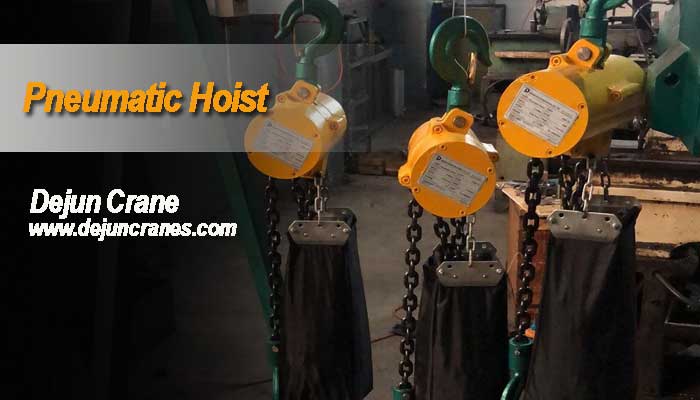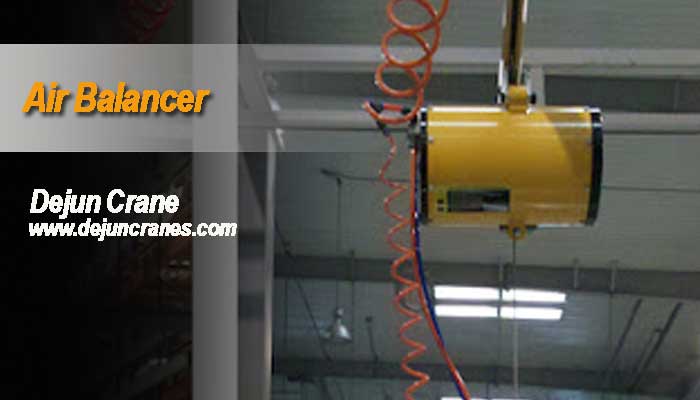Pneumatic hoist and pneumatic balancer are two different pneumatic products, their principle, composition and use environment are different.

Pneumatic balancer is a machine that uses the principle of aerodynamics to realize the weightless state of objects. Pneumatic balancer has the function of balancing the gravity of materials. The pneumatic control system is in the on-state of the pneumatic control reversing valve when the air supply is normally supplied. When lifting with no load, the gas passes through the gas source, filter, and manifold in sequence to the no-load balance pressure reducing valve, shuttle valve, and finally to the executive cylinder.The pneumatic control system is in the on-state of the pneumatic control reversing valve when the air supply is normally supplied. When lifting with no load, the gas passes through the gas source, filter, and manifold in sequence to the no-load balance pressure reducing valve, shuttle valve, and finally to the executive cylinder.
There are two types of pneumatic balancers in the market: one is to use separate control methods of no-load balance and load balance in terms of balance control. The heavy-duty balance control method is only for constant objects for full suspension balance lifting. This type of pneumatic balancer cannot Realize the whole process of suspension and lifting of objects of different weight; the other is a pneumatic balance system that can realize the transportation and hoisting of objects of different weight, but it cannot achieve the full suspension effect of objects of different weight.

Pneumatic hoist is currently the most ideal explosion-proof lifting equipment in the world. Commonly used pneumatic hoists include three types: vane type, piston type and cylinder type. It is mainly composed of four parts, which are gas distribution system, power system, deceleration system and winch system. It is widely used in petroleum, chemical, coal, textile, warehousing, household appliance production lines, automobile manufacturing production lines, ship repair and other industries. It is an essential equipment for safe production, improved efficiency, and reduced costs for enterprises.
The lifting mechanism includes a pneumatic motor, a planetary reducer, a hanging assembly, a brake, a lifting chain, a hook assembly and a main control valve. The lifting mechanism realizes the lifting and lowering of the lifting weight by controlling the main control valve, and achieves the lifting and lowering positioning brake by opening and closing the brake. The pneumatic hoist travelling mechanism adopts a pneumatic travelling trolley, which is composed of active wheels, passive wheels, and trolley panels. The main control valve controls the pneumatic motor and the planetary reducer to drive the active wheels to move to realize the horizontal movement of the lifting weight.
The air distribution system uses compressed air as the power source to control the hoisting and walking of the air circuit control hoist.
The main difference between pneumatic balancer and pneumatic hoist is:
The pneumatic balancer is relatively independent and includes the transfer function. But the scope is not wide.